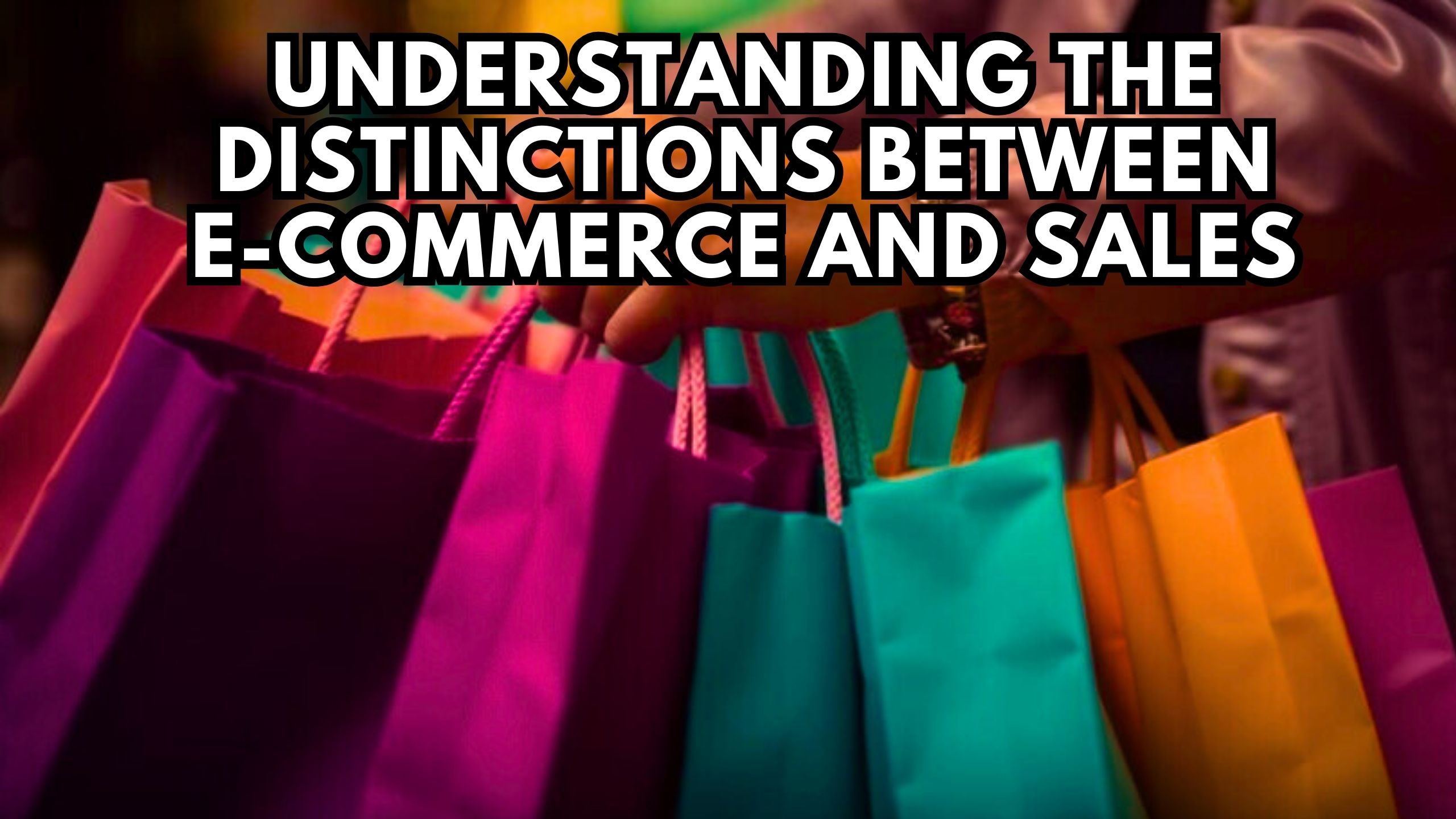Understanding the Distinctions Between E-commerce and Sales


Understanding the Distinctions Between E-commerce and Sales
In the digital landscape, the terms “e-commerce” and “sales” are often used interchangeably, yet they represent distinct facets of the business ecosystem. This blog aims to dissect the nuances between e-commerce and sales, shedding light on their unique roles, strategies, and impact on modern business.
E-commerce: Beyond Transactions to the Online Shopping Experience
E-commerce refers to the broader concept of conducting business transactions electronically. It encompasses the entire online shopping experience, from browsing and product selection to payment and delivery. In essence, e-commerce is the digital storefront that businesses utilize to reach and engage customers on the internet.
Sales: The Art and Science of Persuasion and Conversion
Sales, on the other hand, is the process of persuading potential customers to make a purchase. It involves interpersonal skills, negotiations, and understanding customer needs. While e-commerce is a subset of sales, the sales process extends beyond online transactions to include in-person interactions, relationship-building, and post-sale support.
The Role of SaaS in E-commerce and Sales:
- Shopify: Empowering businesses to create and manage online stores, Shopify is a key player in the e-commerce landscape, providing a user-friendly platform for seamless transactions.
- Salesforce: As a comprehensive CRM platform, Salesforce aids in managing and optimizing the sales process, fostering customer relationships and driving conversions.
- Stripe: A payment processing solution, Stripe facilitates secure and efficient online transactions, a crucial component of the e-commerce ecosystem.
- HubSpot: HubSpot’s sales and marketing tools streamline lead generation, nurturing, and conversion, aligning with both e-commerce and traditional sales strategies.
- Zendesk: Offering customer support solutions, Zendesk contributes to post-sale activities, ensuring a positive customer experience and satisfaction.
Conclusion
While e-commerce and sales share common goals of generating revenue, understanding their distinctions is vital for crafting effective business strategies. E-commerce thrives on the digital landscape, providing a platform for transactions, while sales encompasses a broader spectrum of customer interactions, both online and offline.
Unlock Savings and Streamline Your SaaS Stack with Subscribed.fyi!
At Subscribed.fyi, we aspire to be the ultimate solution for freelancers and small teams managing their SaaS stack. Sign up today to access exclusive deals on 100+ SaaS tools, saving you over $100,000 per year. Manage all your subscriptions in one place, compare tools effortlessly, and make informed decisions with Subscribed.fyi.
Sign Up for Free and Unlock Secret Deals
Relevant Links:





